The other day, this unusual cloudscape over Lake Oconee sent me running for my camera.
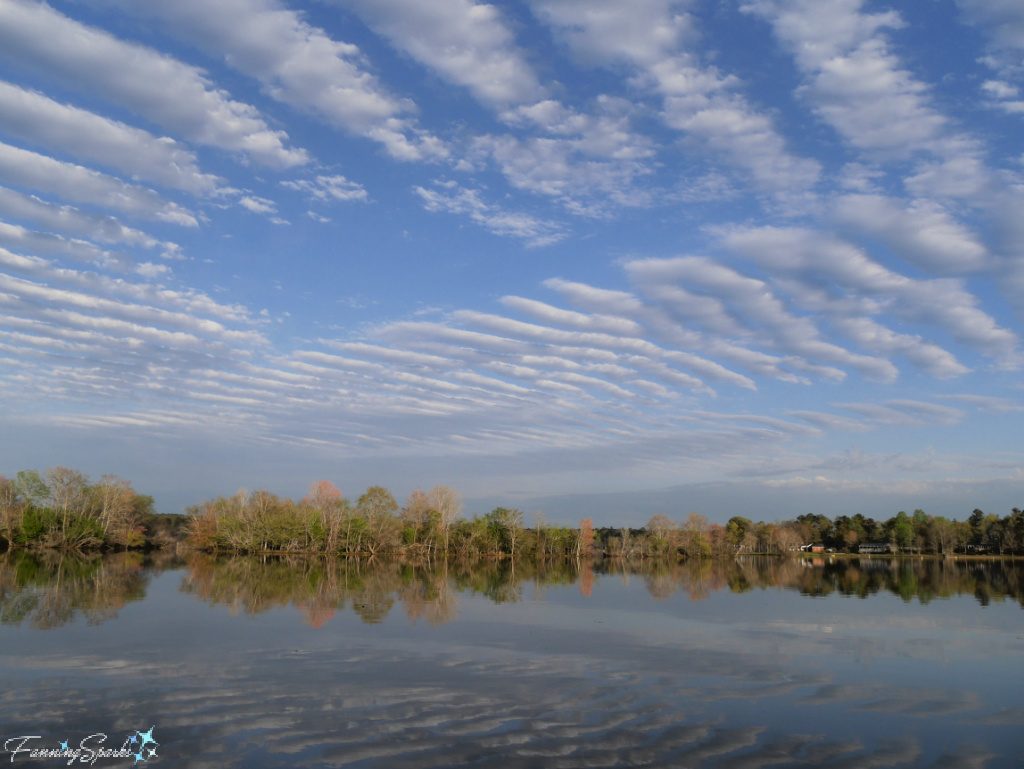
It was strange to see the sky full of puffy white clouds lined up in orderly rows!
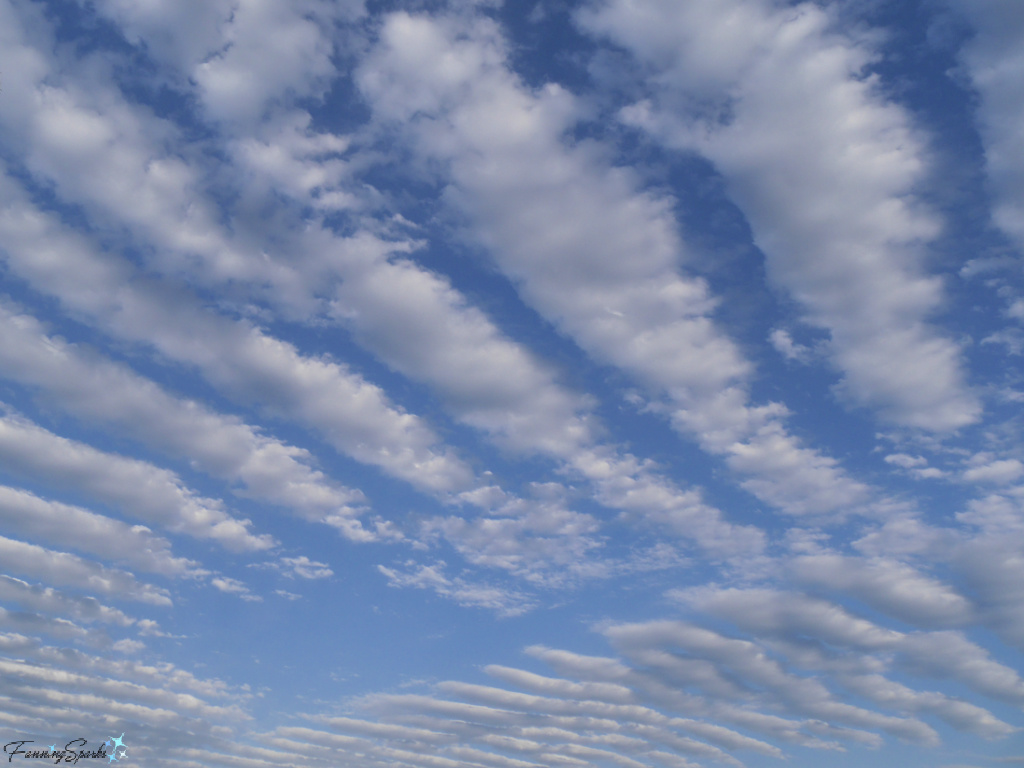 A little online research reveals this cloud variety is likely “undulatus” which, according to the What’s This Cloud website, are “cloud heaps arranged in parallel rows”. But that’s only part of the story. There are “ten cloud types, or cloud generas. Each cloud name is comprised of one or two latin terms and are generally found organized by their level, or altitude. … in addition to the ten main cloud types, there are 34 other latin terms that can be utilized to further describe a cloud… There are fifteen cloud species, nine cloud varieties, eleven supplementary features, four accessory clouds, and five other kinds of clouds.” What’s This Cloud provides a helpful Cloud Identification Chart (in online infographic and printable PDF formats) for free (see More Info below). It’s all quite fascinating!
A little online research reveals this cloud variety is likely “undulatus” which, according to the What’s This Cloud website, are “cloud heaps arranged in parallel rows”. But that’s only part of the story. There are “ten cloud types, or cloud generas. Each cloud name is comprised of one or two latin terms and are generally found organized by their level, or altitude. … in addition to the ten main cloud types, there are 34 other latin terms that can be utilized to further describe a cloud… There are fifteen cloud species, nine cloud varieties, eleven supplementary features, four accessory clouds, and five other kinds of clouds.” What’s This Cloud provides a helpful Cloud Identification Chart (in online infographic and printable PDF formats) for free (see More Info below). It’s all quite fascinating!
Predictably, once I started down this rabbit hole, there was no turning back! So, today’s blog post is all about clouds. I’ve selected a variety of my travel photos to share — all featuring clouds. But instead of trying to identify the various types of clouds, let’s just indulge in some relaxed cloud gazing!
Clouds can add interesting drama to a predictable landscape photo. For instance, check out this intense cloud formation over the rice fields in Ubud, Indonesia.
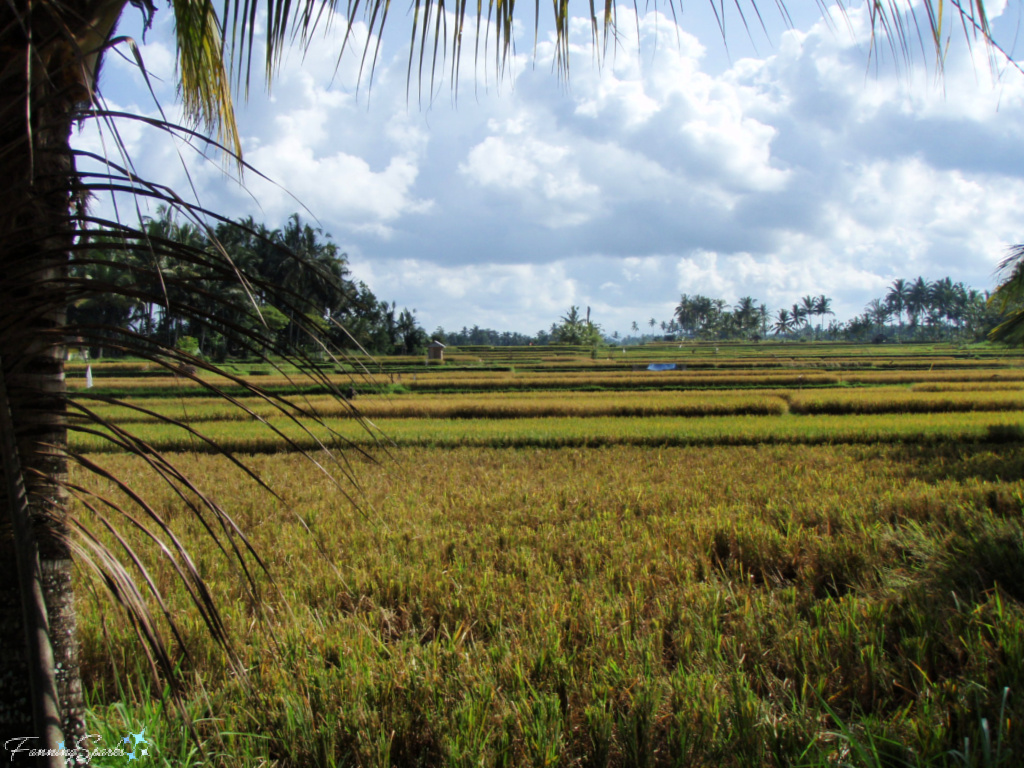 Ha Long Bay in Vietnam is a spectacular natural showcase of water, rocks, sky… and clouds! Shown in the foreground of this next photo is a boat from one of the three traditional floating villages found in Ha Long Bay’s core zone.
Ha Long Bay in Vietnam is a spectacular natural showcase of water, rocks, sky… and clouds! Shown in the foreground of this next photo is a boat from one of the three traditional floating villages found in Ha Long Bay’s core zone.
 In this capture, a fisherman brings his long-tail boat to shore at the end of the day in Phuket Thailand.
In this capture, a fisherman brings his long-tail boat to shore at the end of the day in Phuket Thailand.
 There is something magical about clouds reflected on the smooth surface of water. A simple rowboat provides the ideal focal point for this scene of water and sky near Galway Ireland.
There is something magical about clouds reflected on the smooth surface of water. A simple rowboat provides the ideal focal point for this scene of water and sky near Galway Ireland.
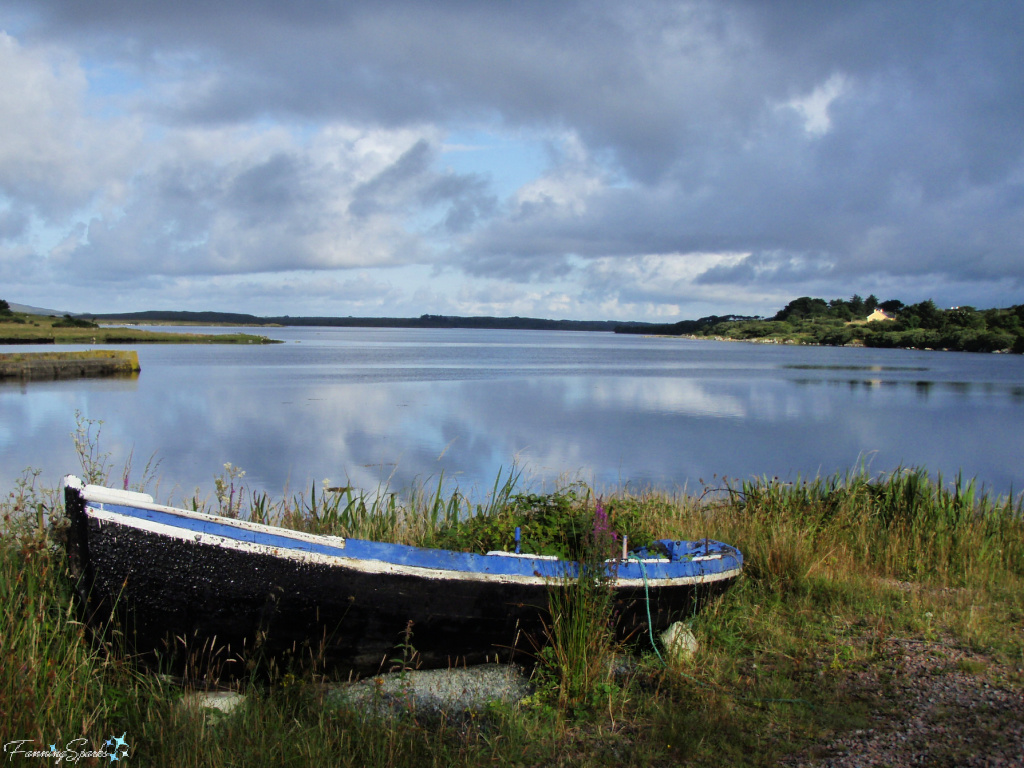 In the next two shots, puffy, white clouds are reflected among the cherry petals floating in the Hirosaki Castle moat in northern Japan. To learn more about my most recent visit to Japan, see the FanningSparks’ blog posts tagged Japan.
In the next two shots, puffy, white clouds are reflected among the cherry petals floating in the Hirosaki Castle moat in northern Japan. To learn more about my most recent visit to Japan, see the FanningSparks’ blog posts tagged Japan.

 Also in northern Japan, clouds cover the peak of Mount Iwaki in the next photo. “You often see clouds above mountains. This is because the air gets colder as it moves up the side of the mountain. Water vapor condenses and forms the clouds.” explains author Elizabeth Miles in her book Watching the Weather: Clouds.
Also in northern Japan, clouds cover the peak of Mount Iwaki in the next photo. “You often see clouds above mountains. This is because the air gets colder as it moves up the side of the mountain. Water vapor condenses and forms the clouds.” explains author Elizabeth Miles in her book Watching the Weather: Clouds.
 Speaking of clouds and mountains, here’s a gorgeous scene from a hike in Zermatt Switzerland.
Speaking of clouds and mountains, here’s a gorgeous scene from a hike in Zermatt Switzerland.
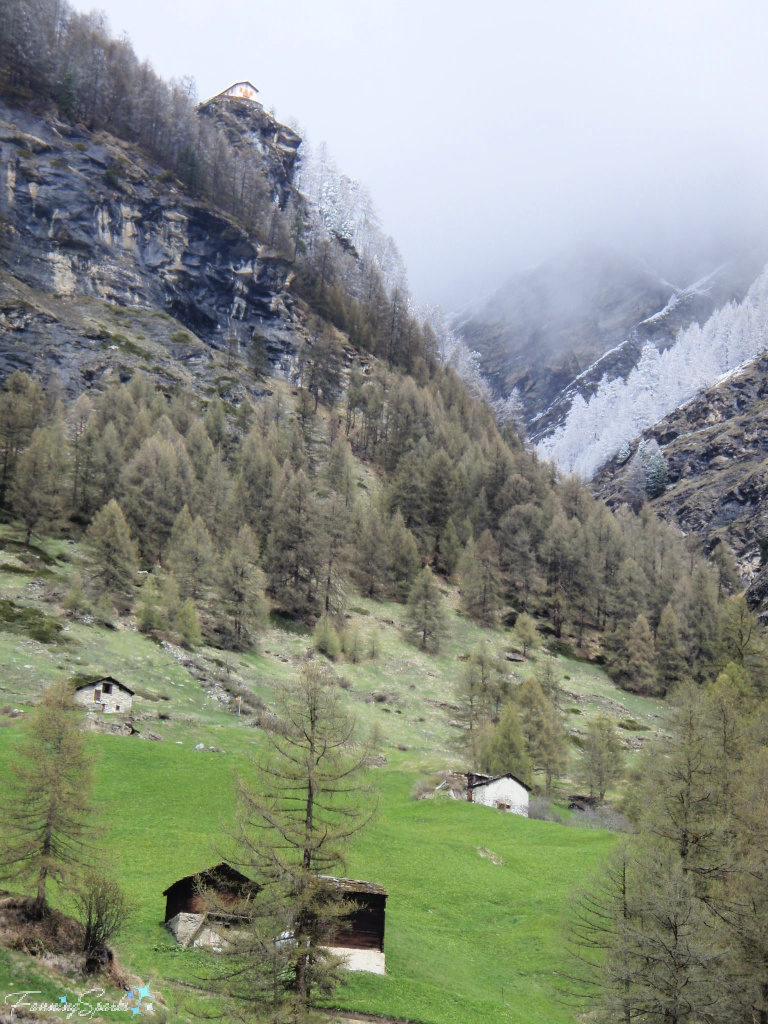
Sections of the hike led me through the clouds themselves.
 As award-winning author, acclaimed natural scientist and environmental pioneer, Rachel Carson, explains “Rolling, swirling along the floor of the air ocean are the lowest clouds of all — fog. For fog is nothing but a stratus cloud so near the earth that sometimes it touches it.”
As award-winning author, acclaimed natural scientist and environmental pioneer, Rachel Carson, explains “Rolling, swirling along the floor of the air ocean are the lowest clouds of all — fog. For fog is nothing but a stratus cloud so near the earth that sometimes it touches it.”
Discovering Rachel Carson through her manuscript for the television program “Something about the Sky” (by CBS Omnibus which aired on March 11, 1957) was the best part of writing this blog post. Her manuscript is included in the book Lost Woods: The Discovered Writing of Rachel Carson which was edited by Linda Lear and published in 1999 (see More Info below). It’s highly informative and beautifully written.
Carson approaches the topic of cloud forms, for instance, with this eloquent introduction: “What of the clouds themselves — the aerial agents of this cosmic process? Someone has said that without the gift of sight, one could never imagine clouds — their beauty, their every-changing shapes, their infinite variety of form.”
If walking through a cloud is an interesting experience, kayaking through a cloud is even better. I took this early morning photo of a rustic wooden dock on Fishing Lake in Georgia while gliding by in my kayak.
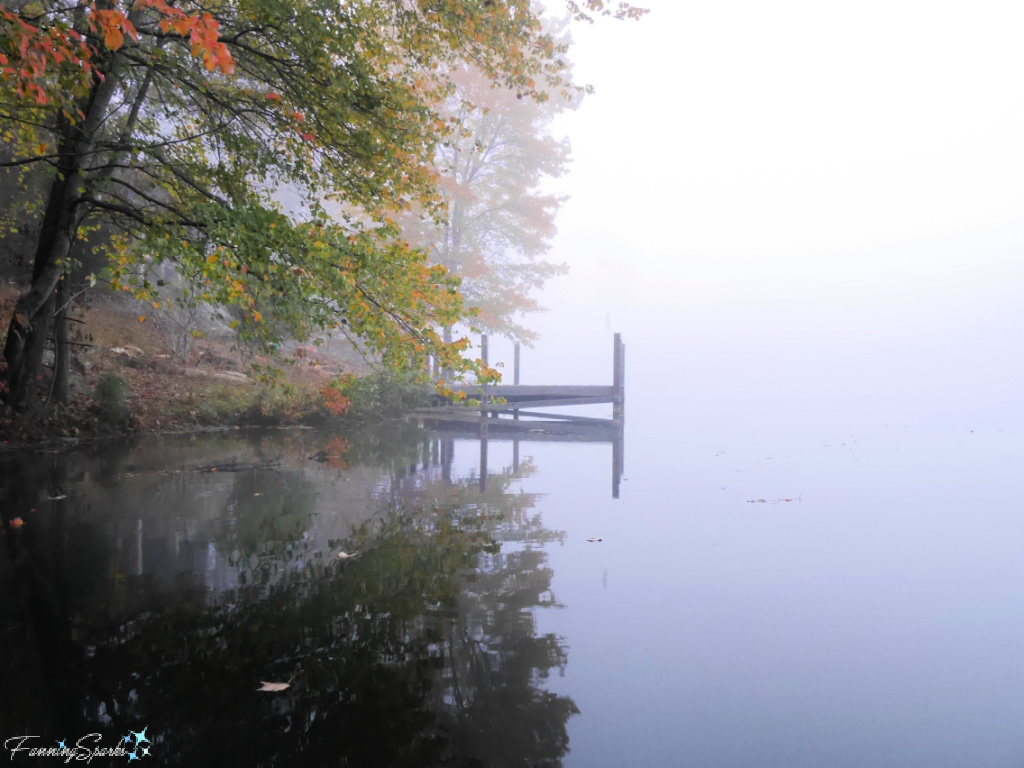 Carson explains “Fog may shut down quickly over a clear autumn night when the air over the land loses its heat by rapid evaporation into the open sky. Such a fog is a shallow one; though we earth-bound mortals grope blindly through it, the tops of tall trees may clear it, and in the morning the sun quickly burns it away.
Carson explains “Fog may shut down quickly over a clear autumn night when the air over the land loses its heat by rapid evaporation into the open sky. Such a fog is a shallow one; though we earth-bound mortals grope blindly through it, the tops of tall trees may clear it, and in the morning the sun quickly burns it away.
Fog of a different sort forms when warm sea air rolls in over colder coastal waters and over the land — shutting down harbors — grounding planes — isolating ships at sea with its soft grey swirling mists.”
Fog is one of the hallmarks of the Atlantic provinces in eastern Canada. This is a scene from Cape Spear in Newfoundland where we watched the fog roll in to completely conceal the distant cliffs. Then, miraculously, the fog burned off and the cliffs reappeared.
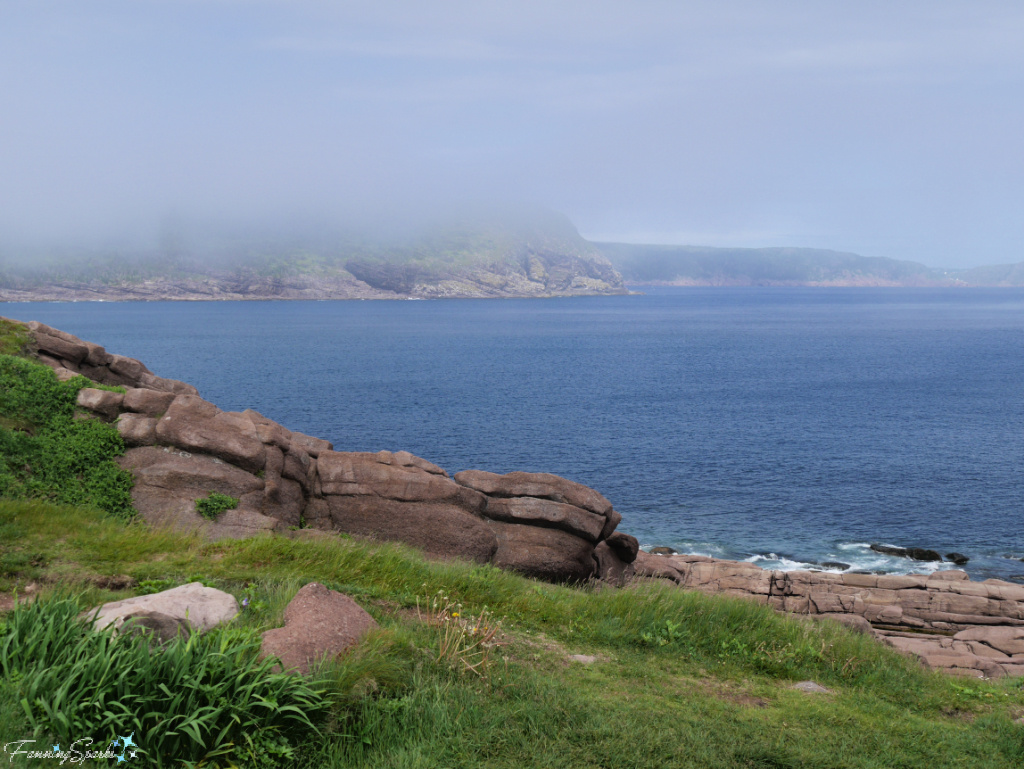 We were spoiled with spectacular views and dramatic skies throughout our entire visit to Newfoundland especially when we veered off the main roads to explore. To learn more about my recent trip to Newfoundland, see the FanningSparks’ blog posts tagged Newfoundland. We were looking for moose (which we never did find!), when we stumbled across this outstanding display of Mother Nature’s handiwork near Grand Falls.
We were spoiled with spectacular views and dramatic skies throughout our entire visit to Newfoundland especially when we veered off the main roads to explore. To learn more about my recent trip to Newfoundland, see the FanningSparks’ blog posts tagged Newfoundland. We were looking for moose (which we never did find!), when we stumbled across this outstanding display of Mother Nature’s handiwork near Grand Falls.
 Here’s another example. We were rewarded with this dramatic setting when we ventured down a rather rough, one-lane road near Twillingate.
Here’s another example. We were rewarded with this dramatic setting when we ventured down a rather rough, one-lane road near Twillingate.
 Nearby, those same cloud-laden skies resulted in this beautiful capture.
Nearby, those same cloud-laden skies resulted in this beautiful capture.
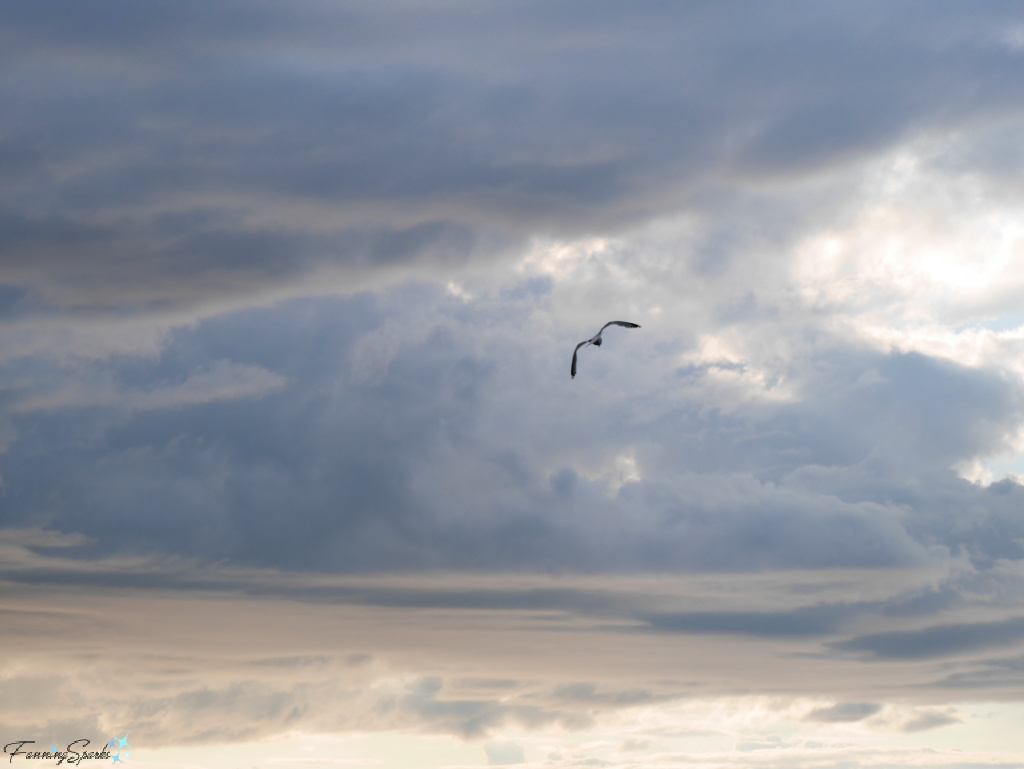 In the same way I am drawn to photograph marvelous clouds and dramatic skies, artists are drawn to capture them in nearly every medium. For instance, at the Parrsboro International Plein Air Festival which is held in Parrsboro, Nova Scotia every summer (see previous blog post, Strolling Through a Picture Postcard), artists capture the splendid landscapes and natural light while painting outdoors. I had the good fortune to witness artist Adam Tragakis painting the stunning cloudy skies over the Fundy cliffs.
In the same way I am drawn to photograph marvelous clouds and dramatic skies, artists are drawn to capture them in nearly every medium. For instance, at the Parrsboro International Plein Air Festival which is held in Parrsboro, Nova Scotia every summer (see previous blog post, Strolling Through a Picture Postcard), artists capture the splendid landscapes and natural light while painting outdoors. I had the good fortune to witness artist Adam Tragakis painting the stunning cloudy skies over the Fundy cliffs.
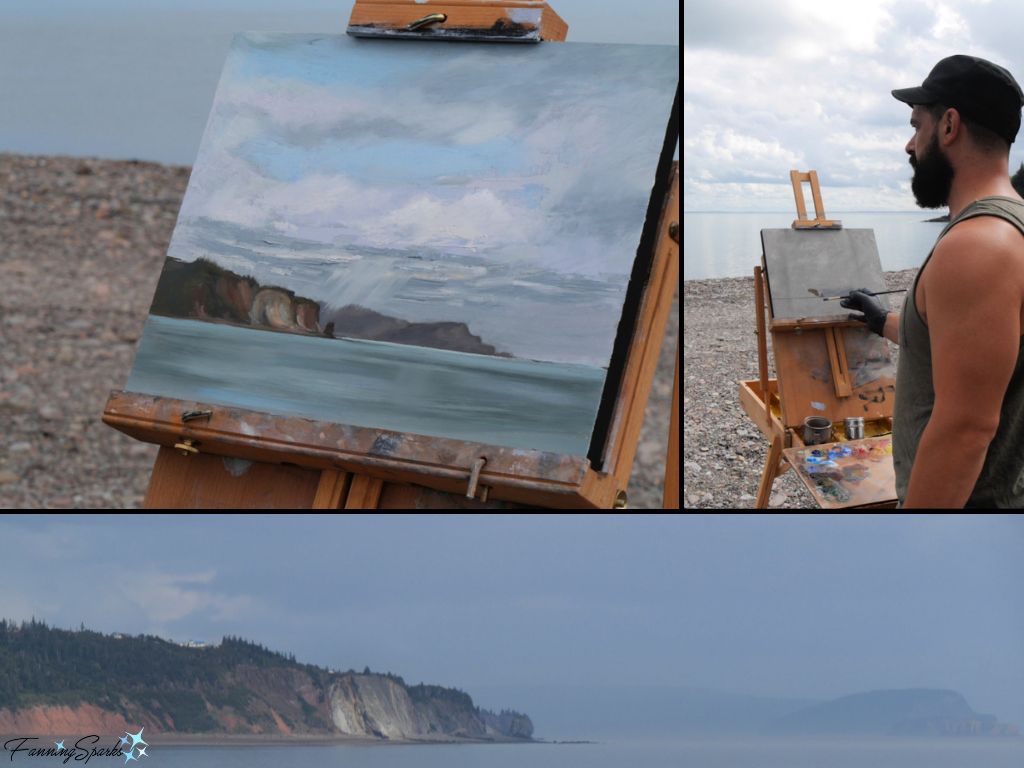 Here’s another breathtaking view from the Parrsboro area.
Here’s another breathtaking view from the Parrsboro area.
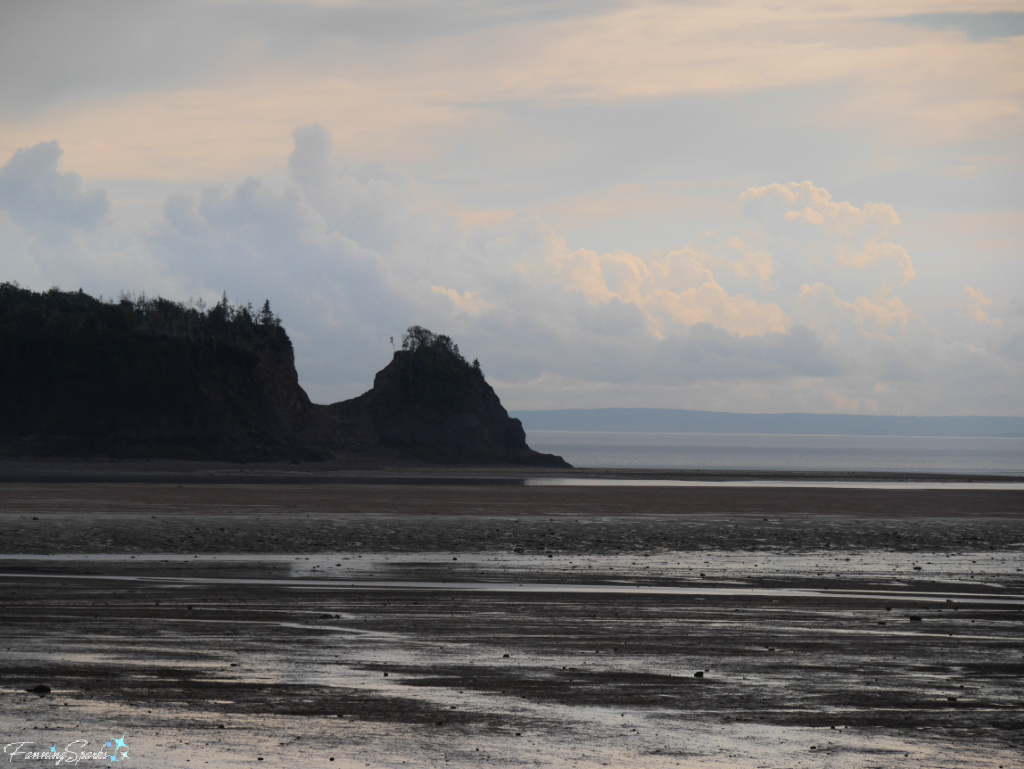 Spectacular cloudscapes can provide the perfect backdrop for built environments, as well. For instance, at the Fortress of Louisbourg in Nova Scotia (see previous blog post Travel Through Time to 1744), clouds add unmistakable drama to this living history museum.
Spectacular cloudscapes can provide the perfect backdrop for built environments, as well. For instance, at the Fortress of Louisbourg in Nova Scotia (see previous blog post Travel Through Time to 1744), clouds add unmistakable drama to this living history museum.
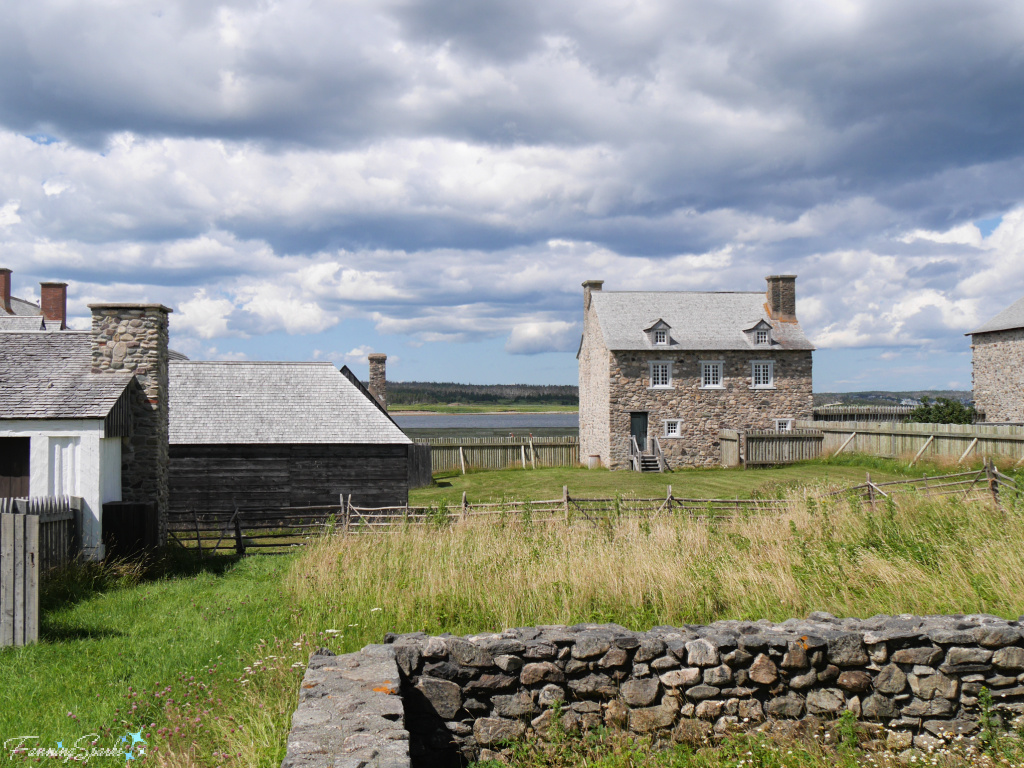
 Shown below, a cloud-filled sky highlights the historic windmills on the Zaanse Schans in the Netherlands. See the previous blog post, Milling the Water of Kinderdijk, to learn more about windmills in the Netherlands.
Shown below, a cloud-filled sky highlights the historic windmills on the Zaanse Schans in the Netherlands. See the previous blog post, Milling the Water of Kinderdijk, to learn more about windmills in the Netherlands.
 The juxtaposition between the puffy, white, cumulus clouds and the stark, grey, stone walls is particularly striking in this photo from Avignon France.
The juxtaposition between the puffy, white, cumulus clouds and the stark, grey, stone walls is particularly striking in this photo from Avignon France.
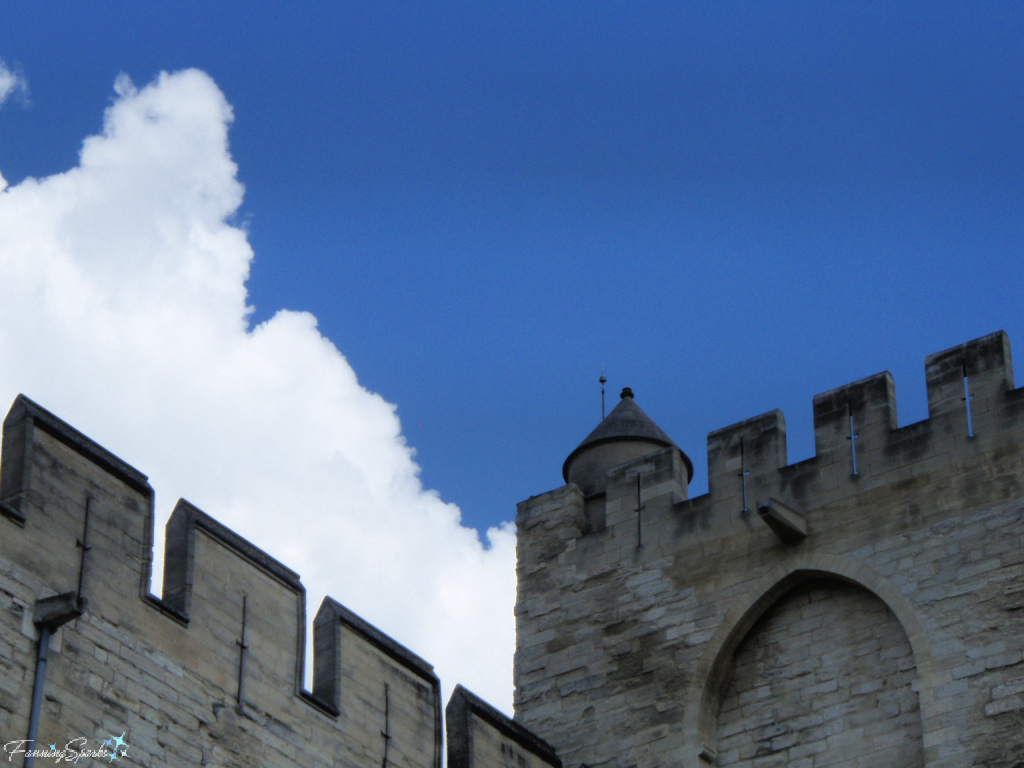
“Most beautiful in the infinite variety of their shapes are the cumulus clouds.” writes Carson. “These are also the clouds that generate the most incredible violence known on earth [via tornados and hurricanes]. The birth of a cumulus cloud is relatively peaceful and simple. As the earth warms under the morning sun, it heats unevenly. Invisible columns of warm air begin to rise — from a plowed field, a lake, a town — any area warmer than its surroundings. The column of rising air contains invisible molecules of water vapor drawn from vegetation, evaporated from the surface of earth or water. Such warm air can hold quantities of water in vapor state. Rising, it cools; at a certain point it can no longer contain its water invisibly; and the white misty substance of a cloud is born.”
Also captured in Avignon is this early morning shot of the famous Avignon bridge. Notice how the clouds enhance the scene both in the sky and on the water.
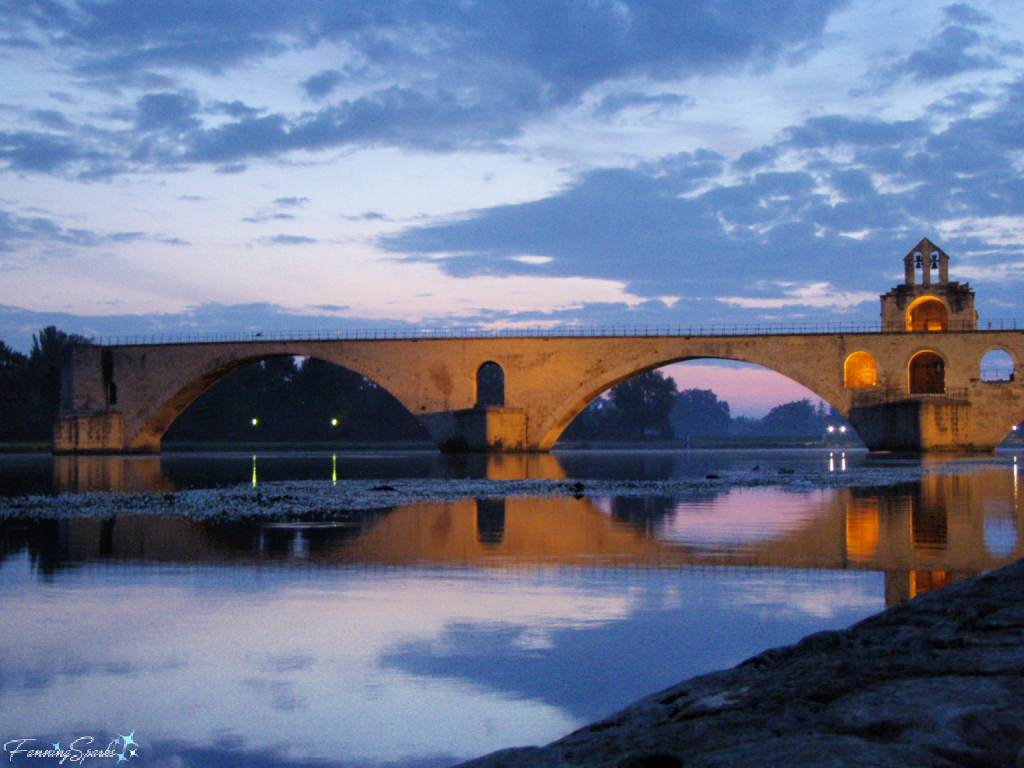 Assuming they don’t block out the sun entirely, clouds can amplify the golden light at sunrise and sunset. Here’s another example. This photo was taken at sunrise on Ambergris Caye in Belize.
Assuming they don’t block out the sun entirely, clouds can amplify the golden light at sunrise and sunset. Here’s another example. This photo was taken at sunrise on Ambergris Caye in Belize.
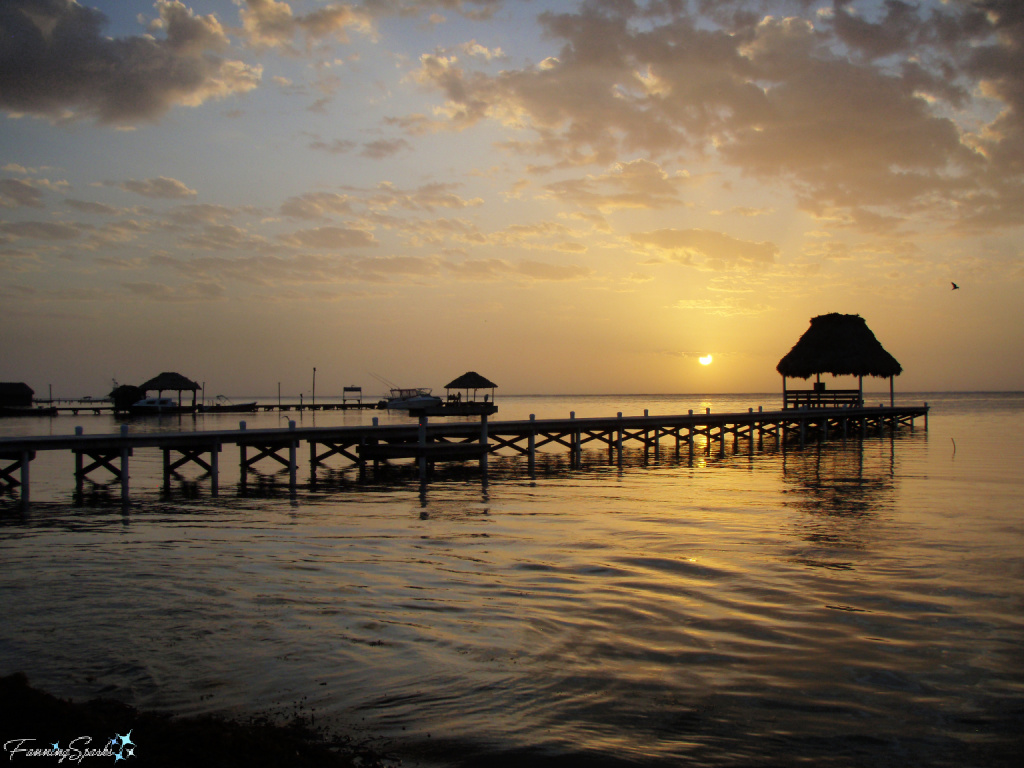 Carson explains “Most ethereal and fragile of all are the high-floating wisps of cirrus, drifting just under the stratosphere. If we could approach them closely in an airplane we would find them glittering in iridescent splendor like the dust of diamonds. … It is the high-riding cirrus that first beholds the sunrise, or in evening holds the light of sunset longest, reflecting back to the dark earth the splendor of a light no longer visible – the rose and gold, the wine and scarlet of the sun.”
Carson explains “Most ethereal and fragile of all are the high-floating wisps of cirrus, drifting just under the stratosphere. If we could approach them closely in an airplane we would find them glittering in iridescent splendor like the dust of diamonds. … It is the high-riding cirrus that first beholds the sunrise, or in evening holds the light of sunset longest, reflecting back to the dark earth the splendor of a light no longer visible – the rose and gold, the wine and scarlet of the sun.”
This brings me to the end of our cloud gazing tour. I’ll wrap up where we started, admiring the clouds from my home on Lake Oconee.

More Info
Previous blog posts mentioned in today’s blog post include:
. Strolling Through a Picture Postcard which describes the three charming historic villages of Chester, Nova Scotia; Victoria, Prince Edward Island; and Parrsboro, Nova Scotia.
. Travel Through Time to 1744 in which I share a visit to the historic Fortress Louisbourg in Nova Scotia.
. Milling the Water of Kinderdijk which describes the traditional windmills in the Kinderdijk area of the Netherlands.
. A series of blog posts about my most recent visit to Japan.
. A series of blog posts about my recent trip to Newfoundland.
The following websites and books were consulted in the writing of this blog post:
. What’s This Cloud website strives to make the hobby of cloudspotting fun and educational. Check out their website for a free Cloud Identification Chart (in online infographic and printable PDF formats).
. Watching the Weather: Clouds by Elizabeth Miles which is available here on Internet Archives.
. Lost Woods: The Discovered Writing of Rachel Carson edited by Linda Lear and published in 1999. It is available here on Internet Archives. The television program manuscript for “Something about the Sky” (by CBS Omnibus which aired on March 11, 1957) is included as Chapter 23.
As described by editor Linda Lear in her Introduction, “Rachel Carson’s literary legacy is only four books. But those four books are enough to have changed how humankind regards the living world and the future of life on this earth. Her literary reputation rests primarily on two of them: The Sea Around Us (1951) and Silent Spring (1962), a book that changed the course of history.
The magnitude of Carson’s impact on the public’s understanding of such issues as ecology and environmental change still astonishes. … Rachel Carson had garnered an international reputation as a natural scientist and public voice for the care of the earth by the time of her death in 1964. She was the most acclaimed science writer of her generation and a literary figure of first rank.”
Sadly, Rachel Carson died from breast cancer in 1964 at the age of only 57. Lear writes “At the same time as Carson carried out her public crusade she was fighting an even graver private adversary. Diagnosed with an aggressively metastasizing breast cancer in 1961, she defended the earth she loved with an added passion born of knowing that her opportunities to speak out were now limited.”
Today’s Takeaways
1. Learning to identify and classify clouds can be quite entertaining.
2. Rachel Carson (1907 – 1964) was an award-winning author, acclaimed natural scientist and environmental pioneer.
3. Consider getting your head into the clouds for some relaxed cloud gazing.


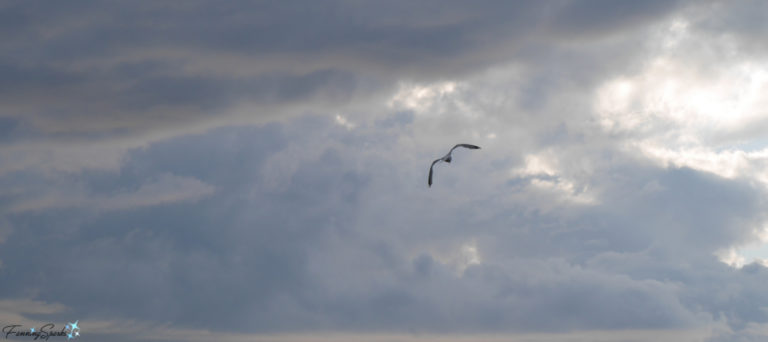


Comments are closed.